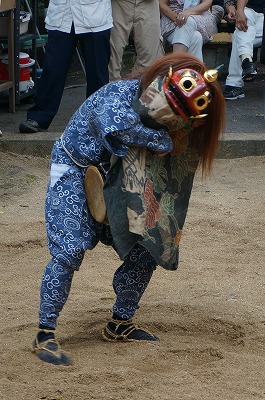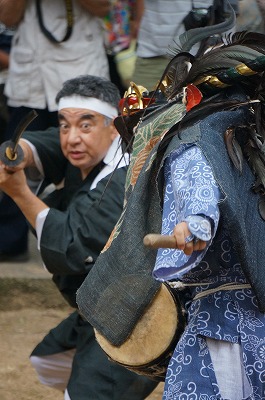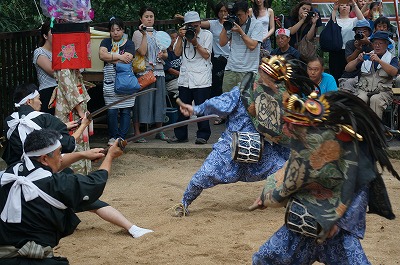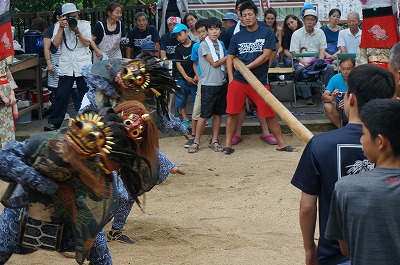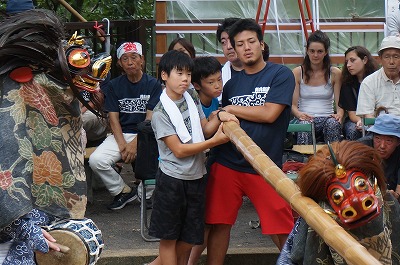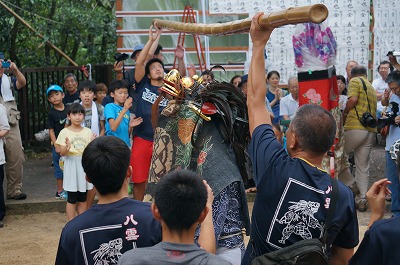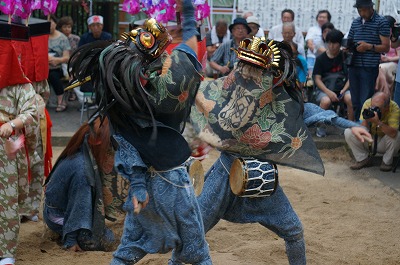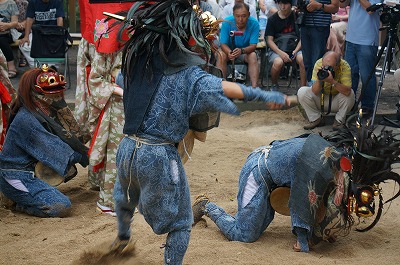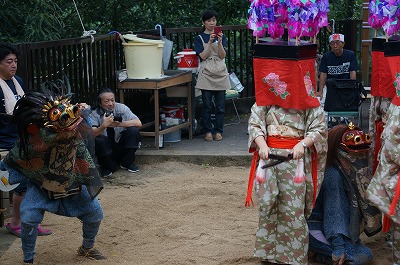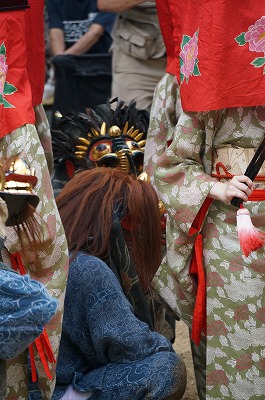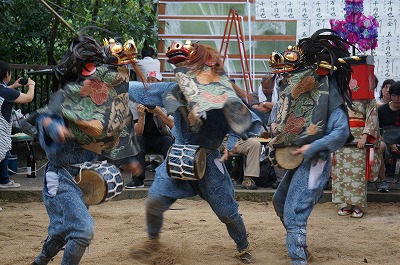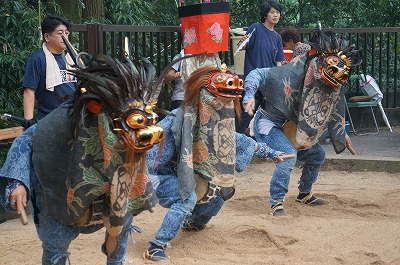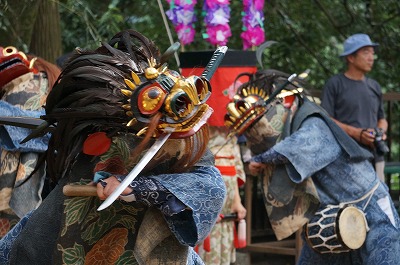Report: Watching Kagura in historical town ~Ashikaga Raiden shrine Kagura


Date: 4th Sunday, April (Spring festival) & 4th Sunday, October (Autumn festival)
Location: Honjo 1-1562, Ashikaga city, Tochigi prefecture
Access: From Tokyo, take the JR Ueno-Tokyo Line to Ueno. From there, change to the Joban Line and go to Kuki. From there, take the Tobu Railway to Ashikaga-shi Station. It is about 4 km from there. About two hours from Tokyo.
*This article is based on my visit in April, 2016.
introduction
This time, we had the same guides as before. If you want to know who they are, please read this article.
Long time no see. I hope you are well
Really. I was looking forward to seeing the Kagura with you again for the first time in a while.
Today, I heard that we are going to visit the Raiden Shrine in Ashikaga City, aren’t we?
That’s right.
By the way, do you know that Ashikaga City is a very historic city?
Yes, I did.
Then do you know why it is so?
No, not that much…
Ashikaga city’s history
I thought it would be something like that. I’m going to give you a brief explanation, so you’d better listen up.
In the beginning, this country was ruled by the emperor, and the nobles held the actual power of politics. But then the samurai came to power. Originally, the samurai were only a kind of bodyguard to protect the aristocrats’ territories. However, as they gradually gained actual power in the countryside, battles between samurai began to occur. Their power was not to be underestimated, and the struggles between the nobles needed their help. Eventually, powerful leaders emerge to unite them. The two major groups were the Heike (平家) and the Genji (源氏). The two sides faced off and Yoritomo, the leader of the victorious Minamoto clan (Genji), created the first ever samurai government.


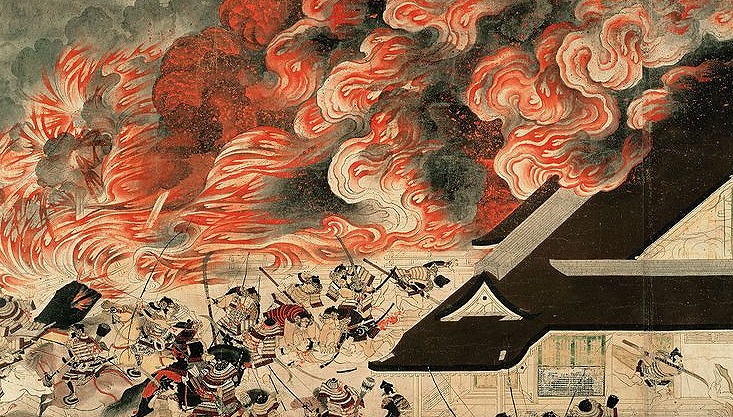

From then on, the power of the samurai prevailed over that of the nobles. This was called the Kamakura (鎌倉) Shogunate, around the 12th century. However, around the 14th century, the forces that held the power of the shogunate became increasingly despotic rulers, and a rebellion finally broke out. They overthrew Kamakura shogunate and established a new government in Kyoto. This was called the Muromachi (室町) Shogunate, and the Ashikaga (足利) clan was the one who created it. The Ashikaga clan’s original hometown is here in Ashikaga.


The Kinkakuji-Temple, one of the most famous tourist attractions in Kyoto, was built by the Ashikaga Shogun.
Come to think, I just talked to an old man who was looking into the shrine and he said he was a descendant of the Ashikaga clan. It’s a town with a long history.
By the way, will you be able to make it to Kagura?
It starts around 11:00, so you’ll have plenty of time to get there.
*Actually, it turned out to be a terrible mistake. This is the author’s actual experience.
But it’s far, isn’t it? I can fly there.
There are bicycles for rent at Ashikagashi Station, so I’ll take this.
Again?!
Well, let’s go!
Let’s go to shrine





There are so many steps…
We humans have to go up here to meet deities.
That sounds good. You should feel the greatness of our deities.


Whew. We’re finally here.
We’re right in the middle of a ritual. Hasn’t the kagura started yet?
It’s past eleven now, so it should start in a little while.
But wait. The sign says that the next one starts from the 8th program. I thought it’s already started.
Oh, my God! I think I misunderstood that the Shinto ritual started at 11:00 and the Kagura started at 11:00.
*The actual start was at 9:00.
It’s no use crying over spiled milk. Let’s get ourselves together.
8th program “Kanayamahiko”


Look! your colleagues are coming out here. They are always noisy, aren’t they.
This is what we do, you know. It’s what we’re so called “mode makers”. But, everyone misses us when we’re not here.


It’s a perfect day for forging sword. Now, let’s get started.
We’ll do our best to help you, sir.
*The following dialogues of the characters are only imaginary. The actual Kagura is performed entirely in pantomime.
But the principal character of the show is this one. It’s Kanayamahiko. He’s the deity of the blacksmith’s ancestors.
He seems so strait-laced.
In the old days, the ability to work metals, whether copper or iron, was the cutting edge of technology.

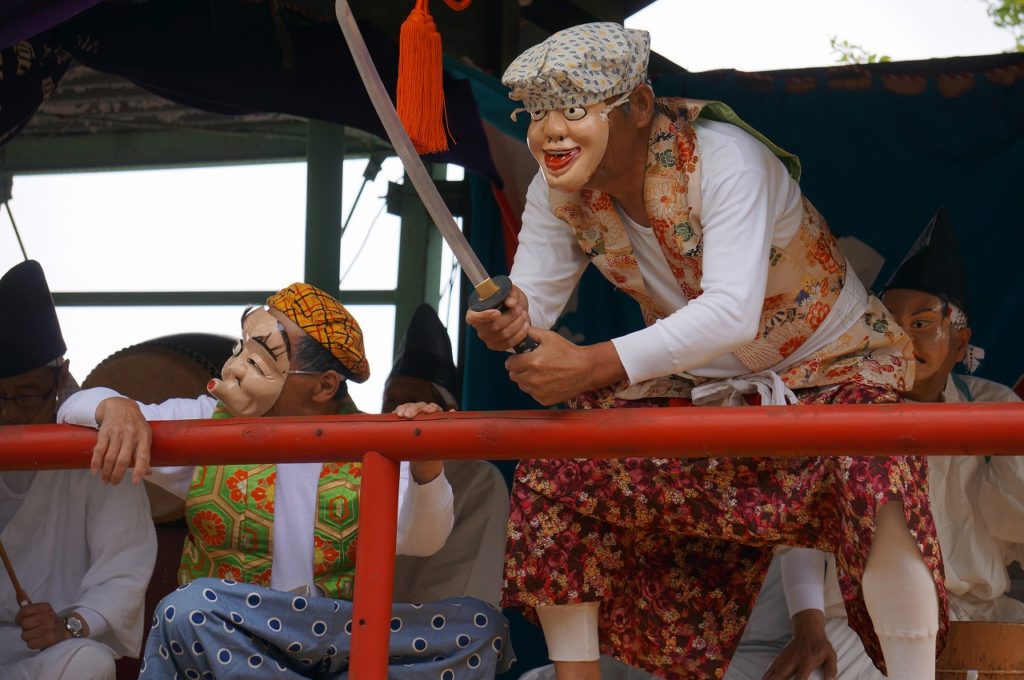
It looks like it went pretty well, don’t you think?
We agree with you completely, sir. It looks great.
Kanayamahiko is looking at the finished sword, and Hyottoko are saying things like, “It’s pretty good,” but do they really know what makes a sword good or bad?
No, I doubt they don’t understand at all. It’s all okay. That’s our role. We are here just to make it lively.


No, not quite enough.
Yes, it is. (Good grief. Isn’t that enough? )

Yeah, it turned out pretty well.
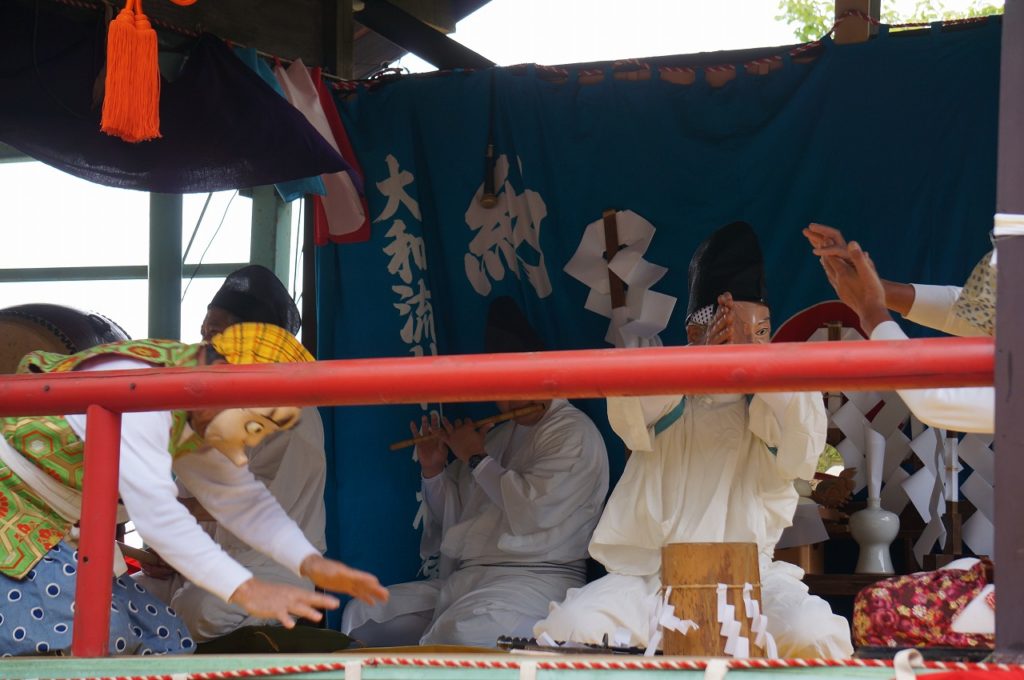
As we expected of you, Sir. Kanayamahiko. You always do such a great job. It was worth our while to help you.
While this was going on, Kanayamahiko left the stage, as if he finally had a sword that he was satisfied with.
9th program “Ebisu”
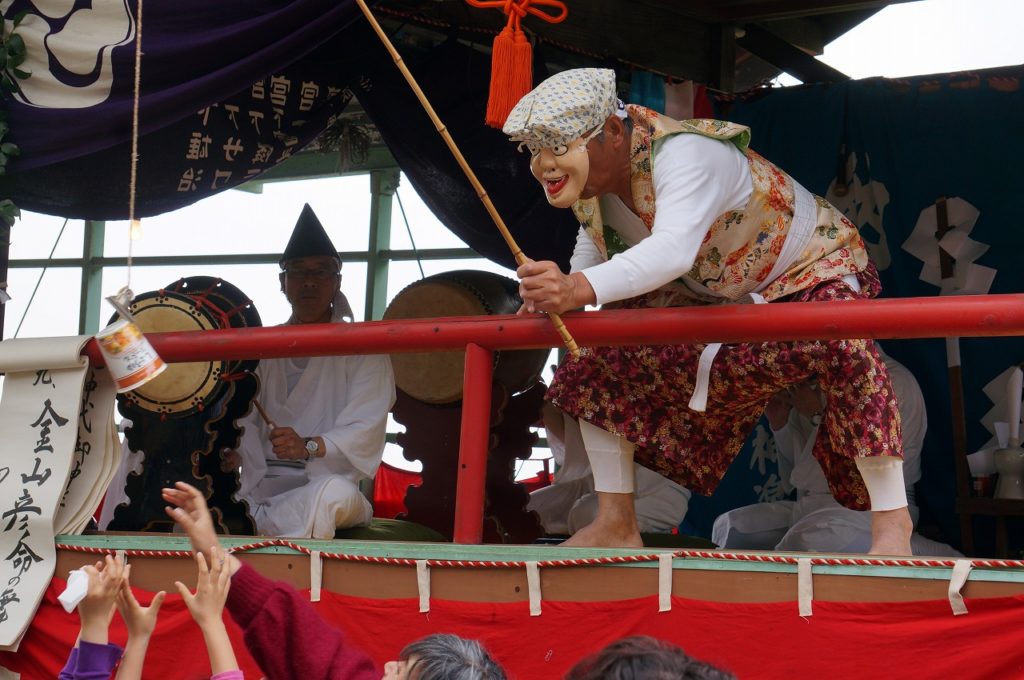

Well, they abruptly started fishing, what a surprise without interuaption?
So, it’s that deity again,


I’ve been waiting for you! The crowd is already in an uproar. Most of the bait are practical things like cup noodles.
The adults were more fascinated than the kids. Is that okay?
*Here’s a little additional explanation. Ebisu is the deity of fishing and also the god of prosperity. He is known for always carrying his fishing gear and a sea bream.





Here’s an amazing tactic coming up.
I mean, he’s not just a mood maker. He is truly an entertainer.


With rice cakes and cup noodles, they can fish for gift money all they want. This is the true *Ebisu face!.
*Ebisu face means smiling face. It is often used to describe the smiling faces that people make when something good happens, especially in business.


Oh, it’s rare to see a Hyottoko fishing for sea bream instead of Ebisu, isn’t it?
Intermission
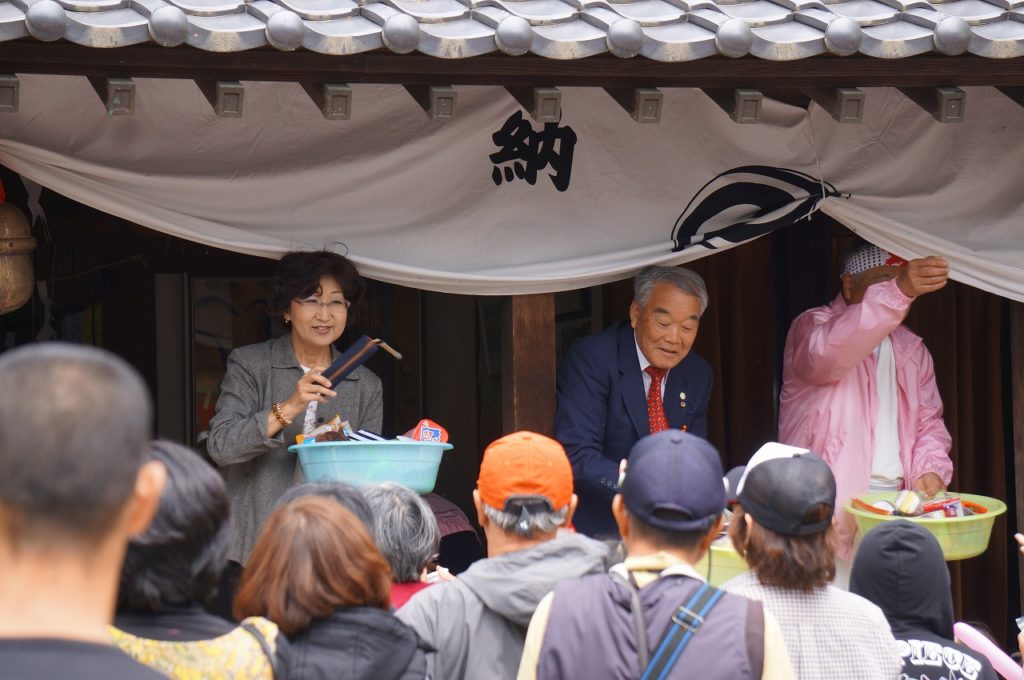

It’s your favorite time of the day.
This is the best part of kagura. In addition, yakisoba noodles are 300 yen, and a plastic bottle of tea is 50 yen. I bought one for you.
Is it really that cheap? It’s already past midday.
10th program “Daikoku”


When Ebisu comes out, Daikoku is supposed to be next. It says in the brochure that he carries a hammer and a fan and sprinkles gold and silver around the country.
Where’d you get a brochure like that?
A person concerned gave it to me because he said I was eager to see even though I wasn’t a local. He said “I hope you will spread the word about this kagura”.
*This is a fact. I would like to express my sincere gratitude to all those involved.


Look at that. That’s a kid learning to play the flute.
Oh, I’m so glad that the next generation is interested in it and passing it on.
“Inari and White foxes”




This is another standard of kagura. This program is the deity “Inari” who cultivates rice with his servants, the foxes.
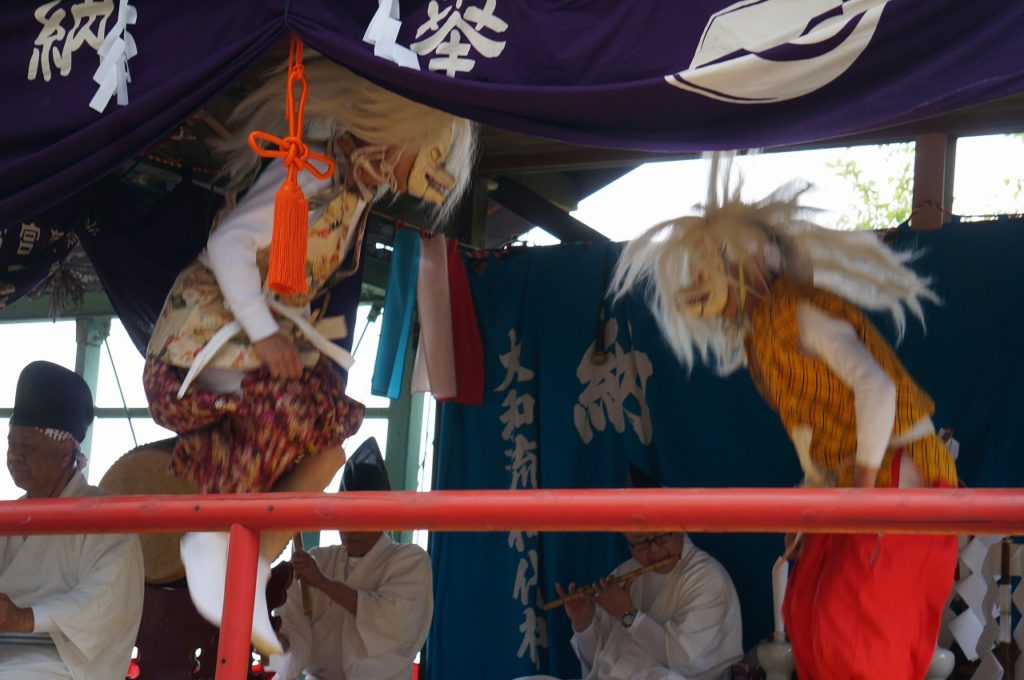

Speaking of foxes, they jump. But it’s hard to play the fox.
Even the role of Inari, which looks so easy, is not easy because you have to show your dignity and integrity.
“Hachiman”


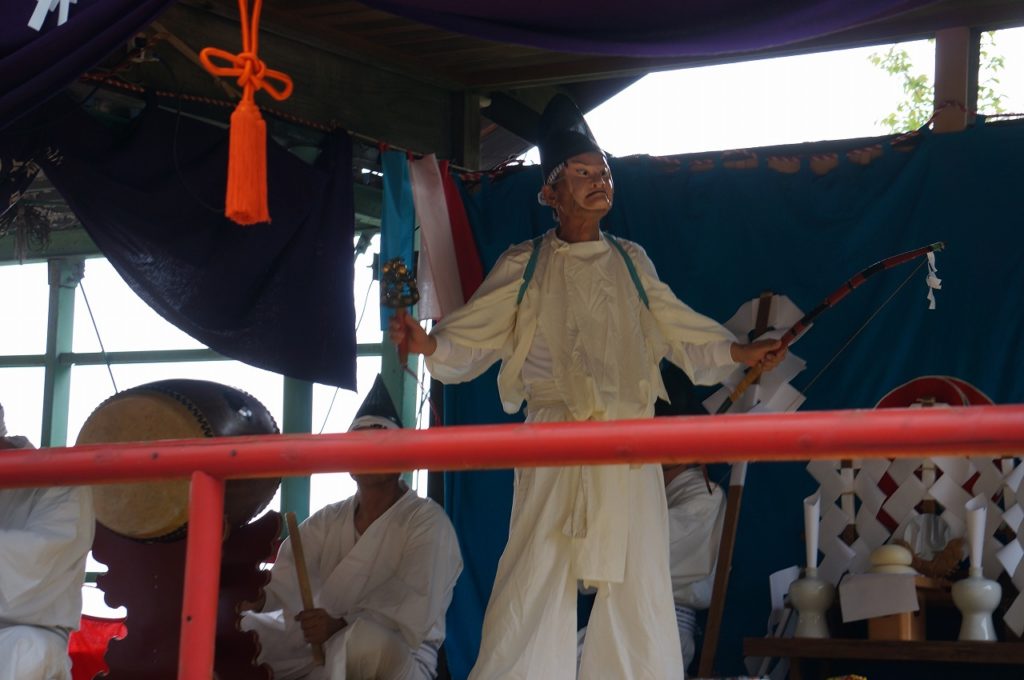
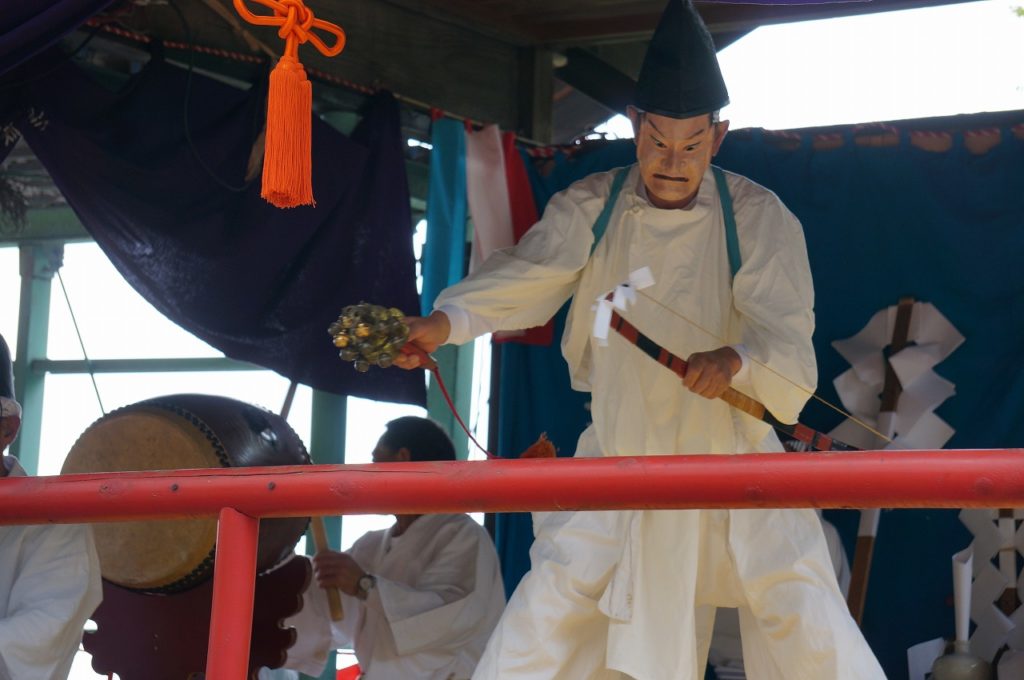
The brochure says that this “Hachiman” is a dance to exterminate evil spirits with a bow.
The Hachiman is the deity of war, and warlords have worshipped since ancient times. In Kamakura city, which was the center of the Kamakura Shogunate, Hachiman Shrine, which enshrines the Hachiman deity, is still an object of worship for the people.
Ending “Sanjin”



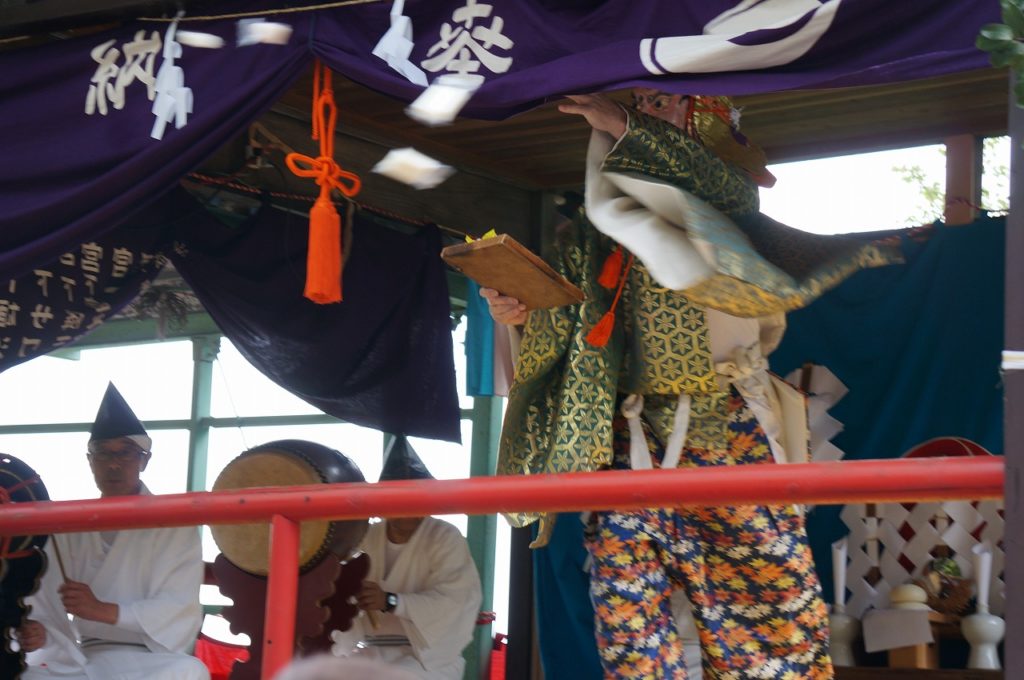
The fact that “Sanjin” is out there means it’s over. Oh, I didn’t expect the rice cake throwing.


Finally, the Kagura people greeted us. By the way, where’d that guy go?
Hehehe, I’ve gotten a lot of them.
You, when did you…?
The number of audience has decreased after the intermission, so the competition had gone down a lot. After all, there’s good fortune in leftovers. Good things come to those who wait. Everybody has to see the kagura until the end.
What a guy.
I’ll give you a piece of candy. The time is 2:30. Isn’t it just the right time for a snack? Now, let’s go home. I’m looking forward to the next kagura. I look forward to seeing you again.
Mmmmm……
After this, I heard they went for a walk around Ashikaga City.







